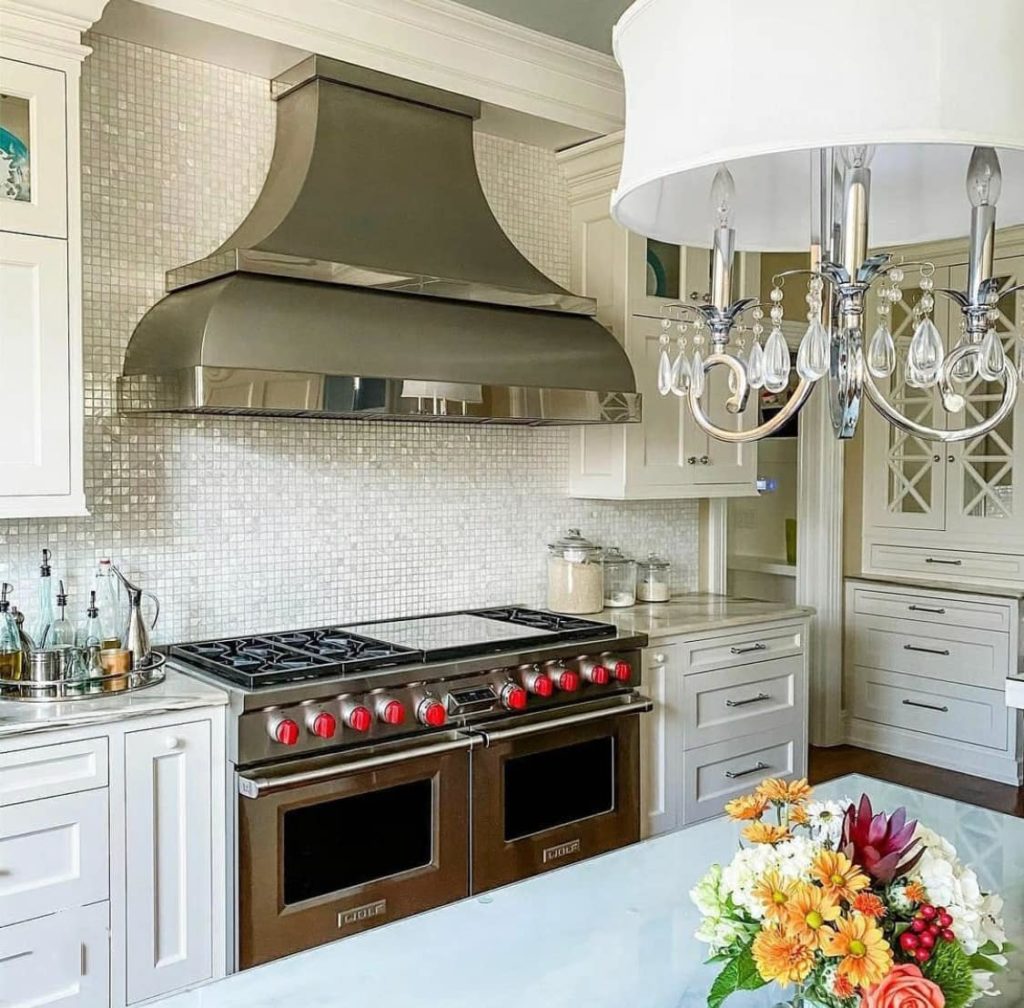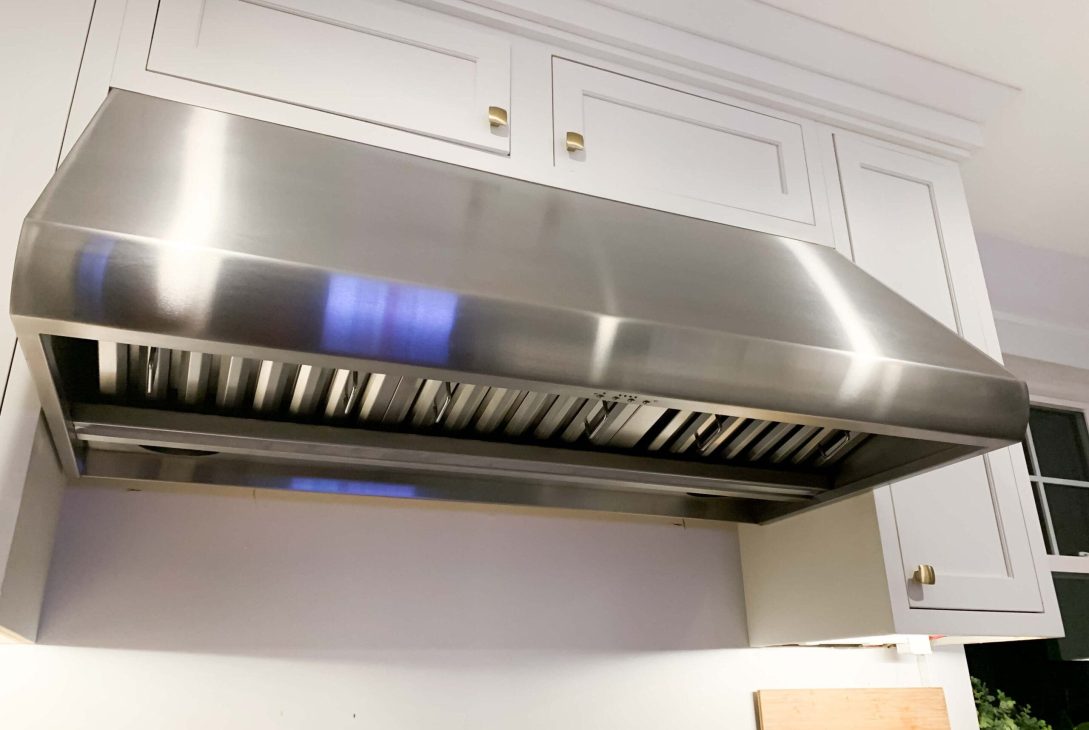Yes, a ducted range hood can be converted to ductless with the use of a conversion kit. Range hoods that originally exhaust to the outside through ductwork can be converted to recirculate air back into the kitchen through a filter.
Converting to a ductless range hood is an option for those who cannot install ductwork or prefer not to have it in their kitchen. This option is also easier and more affordable since it eliminates the need for duct installation.
Ductless range hoods work by circulating air through filters to remove smoke, grease, and other odors from the kitchen. However, ductless range hoods are less effective as they cannot remove all the moisture and fumes from the kitchen.

Credit: rangecraft.com
Reasons For Converting Ducted Range Hood To Ductless Range Hood
Can A Ducted Range Hood Be Converted To Ductless?
Are you considering converting your ducted range hood into a ductless one? There are several reasons why someone might choose to make this switch. We will explore these reasons, along with the benefits and environmental impact of using a ductless range hood.
Explanation Of The Reasons Why Someone Might Choose To Convert Their Range Hood From Ducted To Ductless
Converting a ducted range hood to a ductless one can be a viable option for several reasons, including:
- Cost-effective: Converting to a ductless range hood can be more budget-friendly than installing a new ducted range hood. This conversion eliminates the need for ductwork, making it a cost-effective solution for homeowners.
- Flexibility in kitchen layout: Ductless range hoods are more flexible in terms of where they can be installed. They don’t require ductwork, which means you can place them in multiple locations in your kitchen.
- Ease of installation: Converting to a ductless range hood is a simpler installation process when compared to installing a new ducted range hood.
- No venting required: Ductless range hoods do not require venting, making them a great choice for apartments or homes where venting may not be possible.
Benefits Of Ductless Range Hoods Over Ducted Ones
Ductless range hoods have several benefits over ducted ones, including:
- Energy efficient: Ductless range hoods are more energy-efficient than ducted ones since they do not exhaust air outside. This means that they do not contribute to heat or cooling loss, which reduces energy bills.
- Minimal maintenance: Ductless range hoods require less maintenance than ducted range hoods. Since they don’t have ductwork or flaps to clean, maintenance is minimal.
- Improved indoor air quality: Ductless range hoods have both a carbon filter and a grease filter that remove harmful pollutants and allergens from the air. This feature protects the indoor air quality of your home and keeps it clean.
- Varied filter options: Ductless range hoods have carbon filters that are replaceable and can be customized based on cooking requirements.
Environmental Impact Of Using Ductless Range Hoods
Using ductless range hoods can have a positive impact on the environment. Ductless range hoods:
- Reduce carbon emissions: Since ductless range hoods do not require venting, they reduce carbon emissions caused by traditional range hoods that exhaust air outside.
- Energy-efficient: Ductless range hoods are more energy-efficient than their ducted counterparts. Their use reduces the carbon footprint by using less energy.
- Sustainable: Ductless range hoods use a carbon filter that can be replaced, making them a sustainable option.
Converting your ducted range hood into a ductless one is a cost-effective and energy-efficient solution. Additionally, ductless range hoods reduce carbon emissions and contribute to a sustainable environment.
Factors To Consider Before Converting
Before you decide to convert your ducted range hood to a ductless one, it’s important to consider the factors that can impact the effectiveness and efficiency of your kitchen’s ventilation system. Factors to consider before converting are:
Explanation Of The Important Factors To Keep In Mind Before Starting The Conversion Process
- Cooking habits: If you cook frequently and use high-heat methods such as frying, grilling, and broiling, a ductless range hood may not be the best option for you. The reason is that without proper venting, the smoke and grease particles can linger in your kitchen and leave an unpleasant odor.
- Kitchen size and layout: The size of your kitchen and its layout can greatly impact the effectiveness of a ductless range hood. In order to be effective, ductless range hoods should be installed close to the cooking surface and in an area where the smoke can be easily captured. If your kitchen is large or has an open layout, a ductless range hood may not be able to capture all of the smoke and odors from your cooking.
- Air quality: The quality of air in your home is also an important factor to consider. If you or anyone in your household suffers from allergies or respiratory issues, a ductless range hood may not be the best option. Without proper venting, the smoke from cooking can circulate throughout your home and impact your air quality.
Important Features To Look For In A Ductless Range Hood
If you decide to convert to a ductless range hood, there are certain features that you should look for to ensure that it is effective in removing smoke and odors from your kitchen. These features include:
- Charcoal filters: Charcoal filters are a key component of a ductless range hood. They are designed to trap the smoke, grease, and odors as they are drawn through the filters, ensuring that they aren’t released back into your kitchen.
- Multiple fan speeds: Ductless range hoods with multiple fan speeds allow you to customize the level of ventilation for your cooking needs. This can help ensure that the hood is effective at capturing smoke and odors.
- Easy-to-clean filters: Since the filters are responsible for trapping smoke and grease particles, they can quickly become dirty and clogged. Look for ductless range hoods with easy-to-clean filters that can be removed and washed in the dishwasher.
Costs Associated With Conversion From Ducted To Ductless Range Hood And How To Budget For It
Converting from a ducted range hood to a ductless one can be an expensive process, with costs ranging from $200 to $600 or more. The costs can vary depending on the brand of range hood and the complexity of the installation process.
In addition to the cost of the range hood itself, you may need to hire a professional to install it, which can add to the overall expense.
When budgeting for a new range hood, it’s important to consider the long-term costs of operation. Ductless range hoods require regular filter replacements, which can add up over time. You’ll also want to consider the cost of energy usage, since ductless range hoods rely on fans to circulate air, which can increase your electricity bills.
Overall, there are a variety of factors to consider before deciding whether to convert your ducted range hood to a ductless one. By taking the time to understand the pros and cons of each option and considering the features and costs associated with ductless range hoods, you’ll be able to make an informed decision that meets your specific needs.
Process Of Converting Ducted Range Hood To Ductless Range Hood
Are you tired of your kitchen smelling like last night’s dinner even after opening windows and running the ducted range hood? Did you know that you can convert your ducted range hood to a ductless range hood? This process is simple and can be done easily with the right tools and materials.
Here is a step by step guide to the conversion process:
Step By Step Guide To Conversion
- Switch off the range hood electricity and disconnect the ductwork from the outdoor vent.
- Remove the ductwork from your range hood and remove any screws that are holding the duct in place.
- If your range hood has a backdraft damper, remove it as you won’t need it in your ductless range hood.
- Once you have removed the duct, you will need to cover the vent hole. Use a metal caulk to seal the hole and allow the caulk to dry completely.
- Attach a charcoal filter to the range hood where the duct used to be.
- Connect the range hood to a power source and test its performance.
Tools And Materials Needed For The Conversion Process
Before starting the conversion process, the following tools and materials are necessary:
- Screwdriver
- Metal caulk
- Charcoal filter
- Tape measure
- Pencil
Common Problems That May Arise During The Conversion Process And How To Fix Them
Although the process of converting your ducted range hood to a ductless one is straightforward, sometimes things can go wrong. Here are a few common problems that you may face during the conversion process and how to fix them:
- Inadequate airflow: The air filter may get clogged, leading to poor airflow. Clean or replace the air filter to fix the problem.
- Poor performance: If your ductless range hood is not performing well after installation, ensure that the charcoal filter is the right size for your range hood. Consider replacing it with the right size filter.
- Odor/smoke: If your range hood starts emitting smoke or odors, it may be an indication that the charcoal filter is saturated, or the range hood is not working properly. Test and check for any malfunctions and replace the filters if necessary.
Converting your ducted range hood to a ductless one is a simple and affordable way to keep your kitchen smelling fresh and clean. Use the step by step guide and necessary tools to switch to a ductless range hood today.
Maintenance And Care For Ductless Range Hoods
Can A Ducted Range Hood Be Converted To Ductless
Cooking generates smoke, steam, and grease, making it messy and unhealthy. To prevent these issues, range hoods are becoming increasingly popular. While ducted range hoods are more efficient than their ductless counterparts, they can still cause disturbances in the house’s ventilation system.
Therefore, ductless range hoods are gaining popularity because they provide a vent-free option for homeowners who do not want to put holes in their house’s walls.
Explanation Of The Regular Maintenance And Cleaning Required For Ductless Range Hoods
Ductless range hoods require regular maintenance and cleaning to work at their best. Here is a list of tasks that can help keep your ductless range hood functioning efficiently and safely:
- Clean the filter: The filter on your ductless range hood has to be cleaned regularly. It is recommended to clean it once a month or as frequently as necessary depending on how often you cook.
- Use warm soapy water: Use warm soapy water to clean the filter. Scrub gently in the direction of the filter’s grain. Rinse with clean water and dry the filter before reassembling the range hood.
- Clean the surface: Clean the range hood’s surface with warm soapy water and a soft cloth. Do not use abrasive cleaners or steel wool. You can also use a mild degreaser for stubborn grease stains.
- Check for grease build-up: Pay close attention to grease build-up on the range hood. If grease builds up, it can restrict airflow and reduce the range hood’s ability to filter cooking fumes.
- Replace the filter: If the filter is damaged, it should be replaced immediately, as this may affect the effectiveness of the range hood.
Overview Of Common Problems That May Arise With Ductless Range Hoods And How To Fix Them
Like all appliances, problems may arise with ductless range hoods. Here are some of the common problems you may encounter and how to fix them:
- Noise: If your range hood is making a lot of noise, then it might be due to the fan motor. You can either replace or lubricate it.
- Odors: If your range hood is generating a bad smell, it might be due to a dirty filter or a blocked duct. Clean the filter or remove the obstruction to fix this problem.
- Poor suction: If your range hood is not drawing in smoke and steam effectively, it could be due to a damaged filter. Clean it or replace it to improve suction.
- Light not working: If the range hood light is not working, it might be due to a burnt-out bulb. Replace the bulb to fix this problem.
Explanation Of How To Troubleshoot Common Issues With Ductless Range Hoods
If you encounter issues with your ductless range hood, troubleshooting them can help you solve the problem. Here are some of the techniques you can use to fix common issues:
- Check the power supply: If the range hood is not turning on, check the power supply. Ensure it is plugged in, and the circuit breaker has not tripped.
- Clean the filter: If the suction starts to decline, it might be due to a clogged filter. Clean it or replace it to improve the hood’s function.
- Check for blockages: If the ventilation ducts have debris or are obstructed, the range hood may not work effectively. Clean the obstruction to fix this problem.
- Replace parts: If you have tried everything and the issue persists, consider replacing the faulty parts or calling a technician for assistance.
By taking care of your ductless range hood, you can ensure that it works efficiently and effectively while maintaining good air quality in your kitchen.
Frequently Asked Questions Of Can A Ducted Range Hood Be Converted To Ductless
Can A Ducted Range Hood Be Converted To Ductless?
Yes, a ducted range hood can be converted to ductless. All you need is a ductless conversion kit, which includes an activated charcoal filter and a mesh filter to trap grease. The kit also has all the necessary screws and brackets required for installation.
How Does A Ductless Range Hood Work?
A ductless range hood sucks the kitchen air through its filters and then circulates it back into your home. The activated charcoal filter in the hood absorbs the odors, while the mesh filter traps grease particles. The air then flows back into the kitchen, odor-free and cleaner.
What Are The Benefits Of Using A Ductless Range Hood?
A ductless range hood is relatively easy to install and more affordable than a ducted one. With its charcoal filter, it effectively removes cooking odors, smoke, and airborne grease from your kitchen. It doesn’t require ducts, so it’s ideal for apartments or houses where installing a ducted range hood would be impossible or expensive.
Can A Ductless Range Hood Vent Outside?
No, a ductless range hood doesn’t vent outside. Instead, it recirculates the air back into your kitchen, which means that it doesn’t require any ductwork or venting to the outside. This makes it simpler and more affordable to install than a traditional range hood.
Conclusion
Converting a ducted range hood to ductless is a possible option only if you are able to install a carbon filter and ensure that the hood is capable of filtering the air without the need for ducts. Although there are many potential benefits to installing a ductless range hood, you should be aware of the limitations and downsides.
A ductless range hood can only purify the air within the kitchen that surrounds it. It will not effectively remove smoke or moisture from your home like a ducted system can. Furthermore, the carbon filters need to be cleaned or replaced regularly to ensure they are effective which may be an additional expense.
At the end of the day, whether to upgrade to a ductless range hood or to stick with the ducted one, it all comes down to personal preferences and your specific needs. Regardless of which option you choose, make sure that it fits your lifestyle, home design, budget, and satisfies the desired level of comfort.

Freda is a passionate foodie and kitchen gadget enthusiast. With over 10 years of experience in the culinary industry, Freda brings her expertise in testing and reviewing kitchen gadgets.





